A&Q review
A&Q
Paulina Acencio Fuentes and Gee Wesley, with Cristobal Gracia, Kameelah Janan Rasheed, Rose Salane, and Claudia Peña Salinas.
2024
Gato Negro Ediciones and CCS Bard
Perfect-bound softcover
52 pages
4.5 x 6.5 in.
Risograph printed
3-colour (Orange, Fluorescent Pink, Black) cover
1-colour Black interior on newsprint
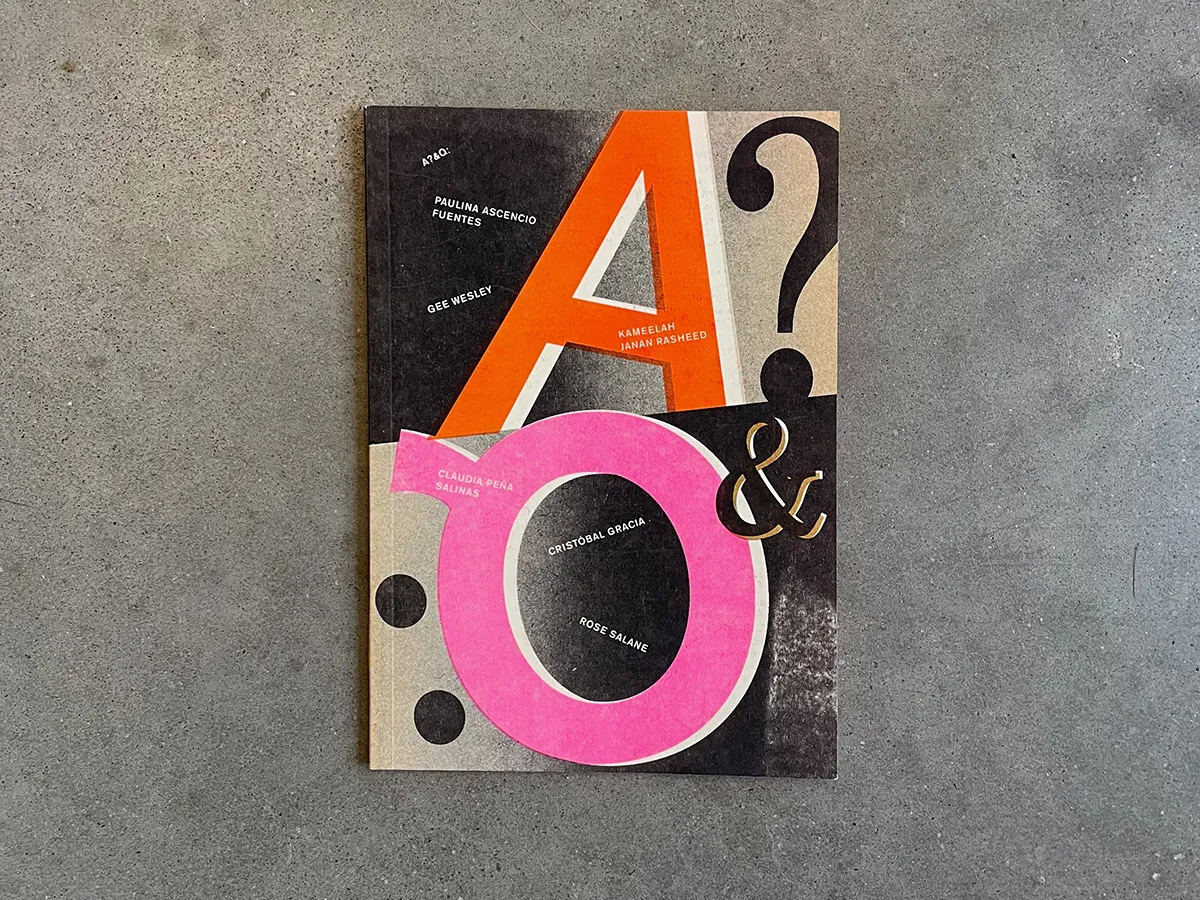
This small risograph booklet consists of a series of five short answers each with five corresponding questions asked by the publication’s organizers (Paulina Acencio Fuentes and Gee Wesley) and four invited artists: Cristobal Gracia, Kameelah Janan Rasheed, Rose Salane, and Claudia Peña Salinas. The artists provide one-sentence (sometimes longer) questions as responses to each proposed answer in their own distinctive voices (though they are not directly identified on the page), speculating on the nature of knowledge production.
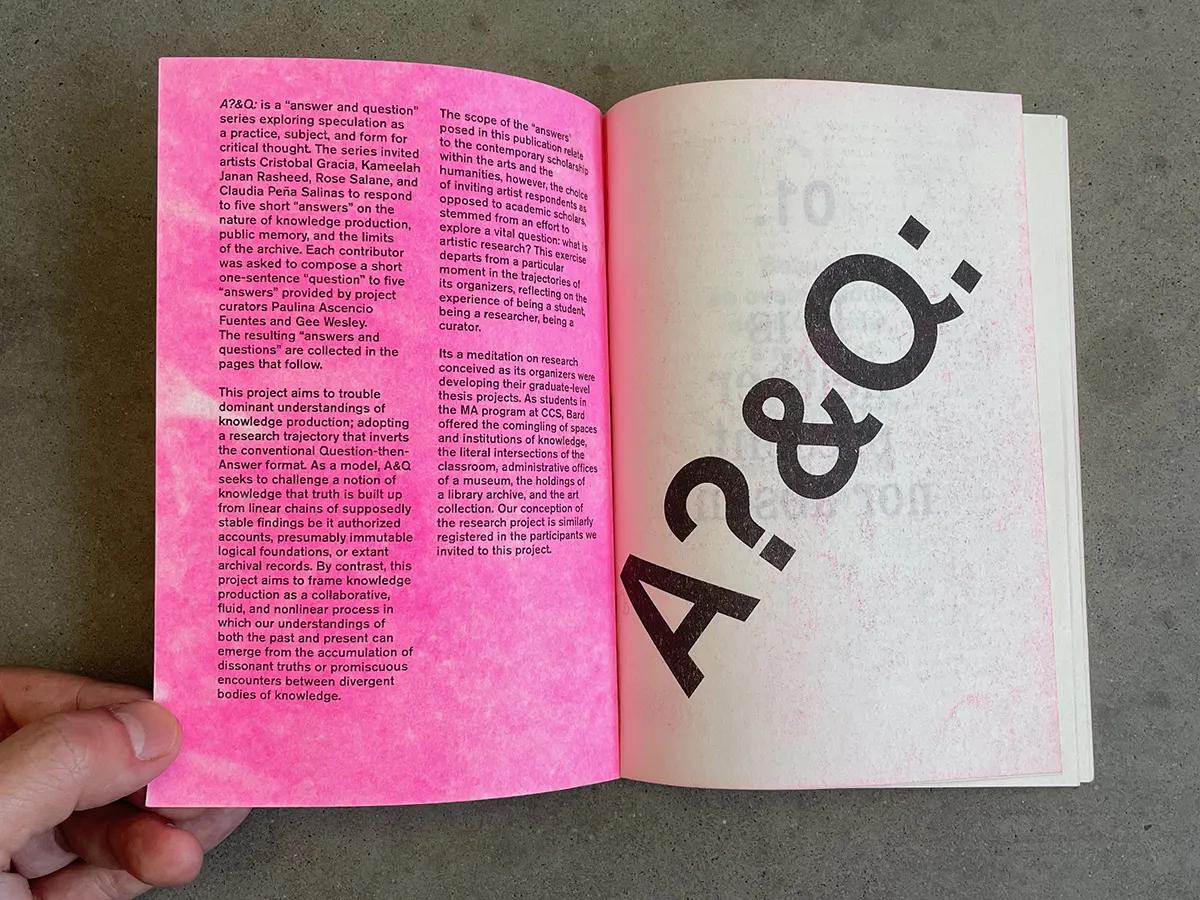
As described in the booklet’s introduction, this simple and novel inversion of the conventional Q&A proposes a model for artistic research that challenges linear-order logic, truth-claiming knowledge, and the stability of authorship and authority. It interrupts “natural” grammar, as I notice the difficulty while simply writing the short description above (where I instinctively write with the feeling that the answers should be questions and the questions should be answers). The simplicity of this conceptual switch belies its imaginative potency as a critical and rhetorical method.
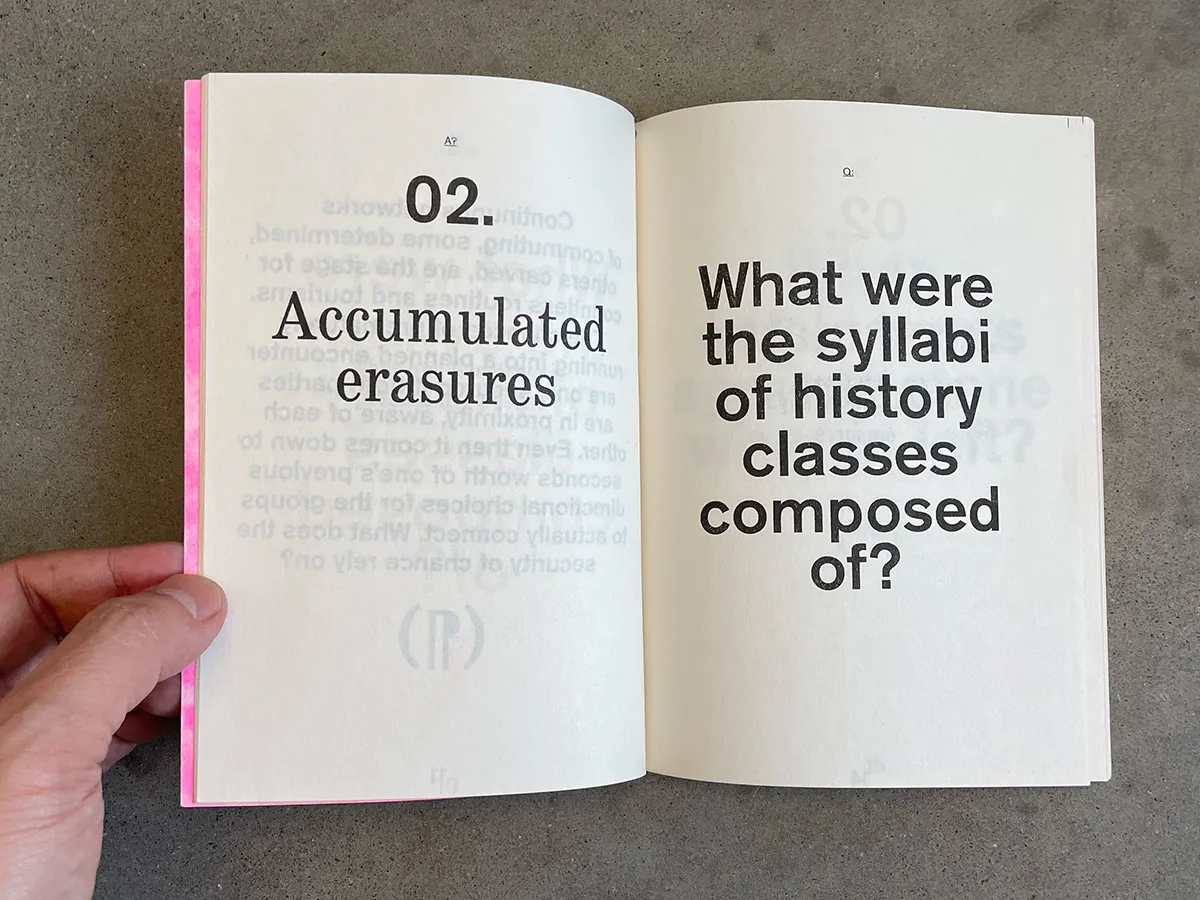
The typographic design is spartan, uniform, and direct. Each spread contains an answer on the verso and a question on the recto, centre-aligned and set in the middle of the page. The answers are typeset in a narrow transitional serif typeface, and the questions are set in a bold, roughly hewn, neo-grotesque sans-serif. The questions alternate between two-sizes of large type depending on the length of the text. Each question’s author (excluding the first, presumably written by the booklet’s organizers) is identified by a large typographical glyph (*,•, @, ¶) below the text that is indexed to the individual artist in the back matter.
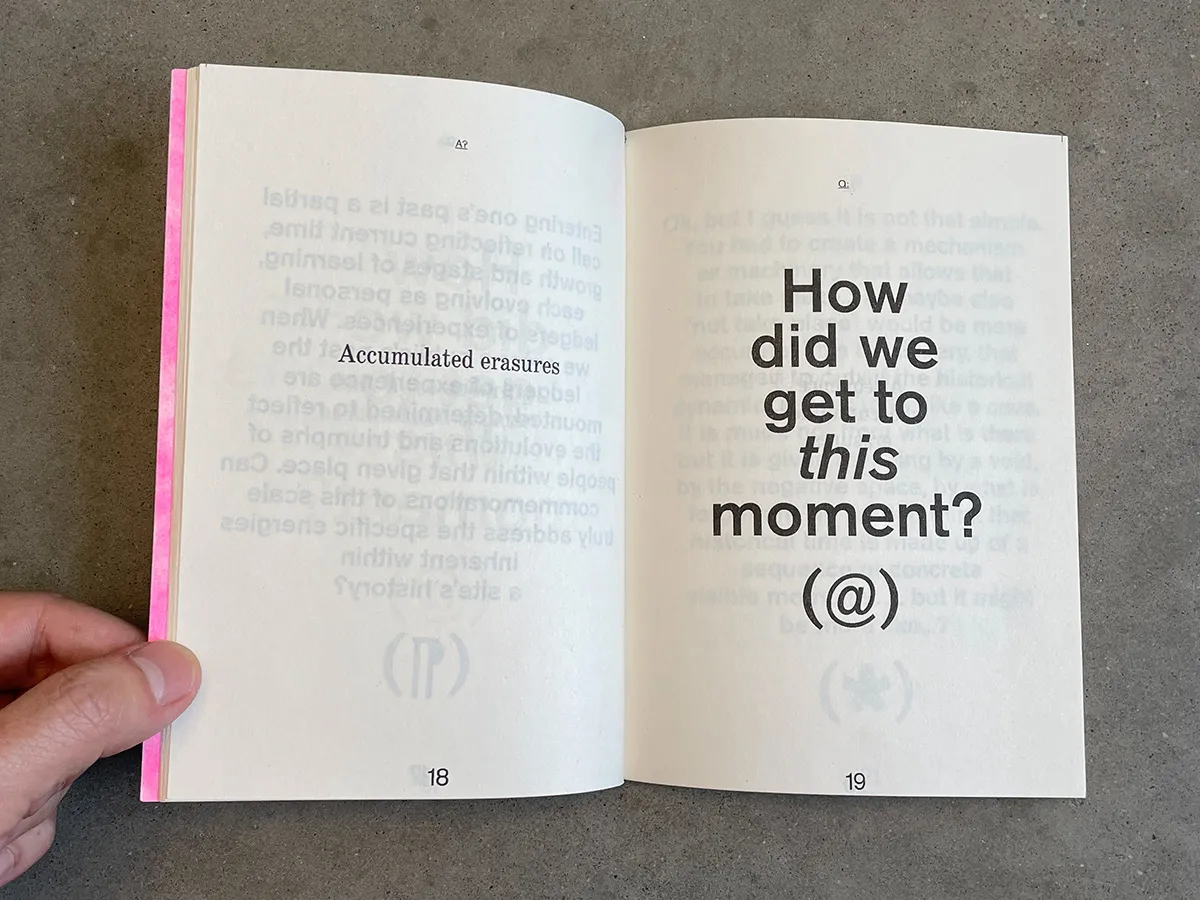
The structure of the booklet encourages reading across and alongside the individual artists’ questions, from the pointed and poetic to longer meandering speculations. Gracia’s(*) questions build upon each other in conversation with the previous answers shaping a narrative while Rasheed’s(@) short questions punctuate and interrupt, “How did we get to this moment?”.
While the serial “answer > question” x5 structure repeats faithfully throughout the booklet, the order of presentation of the artists’ responses changes with each series and individual instances of each answer vary with the addition of prepositions and slight changes in phrasing to better address the specific question: "A sequence of accumulated erasures" or "The many ghosts of history." These disruptions to the rigidity of the set format make evident the intentional editorial hand of the organizer/editors, and in my reading also point towards a nonchalance in breaking their own rules that warms the overall feel of the text.
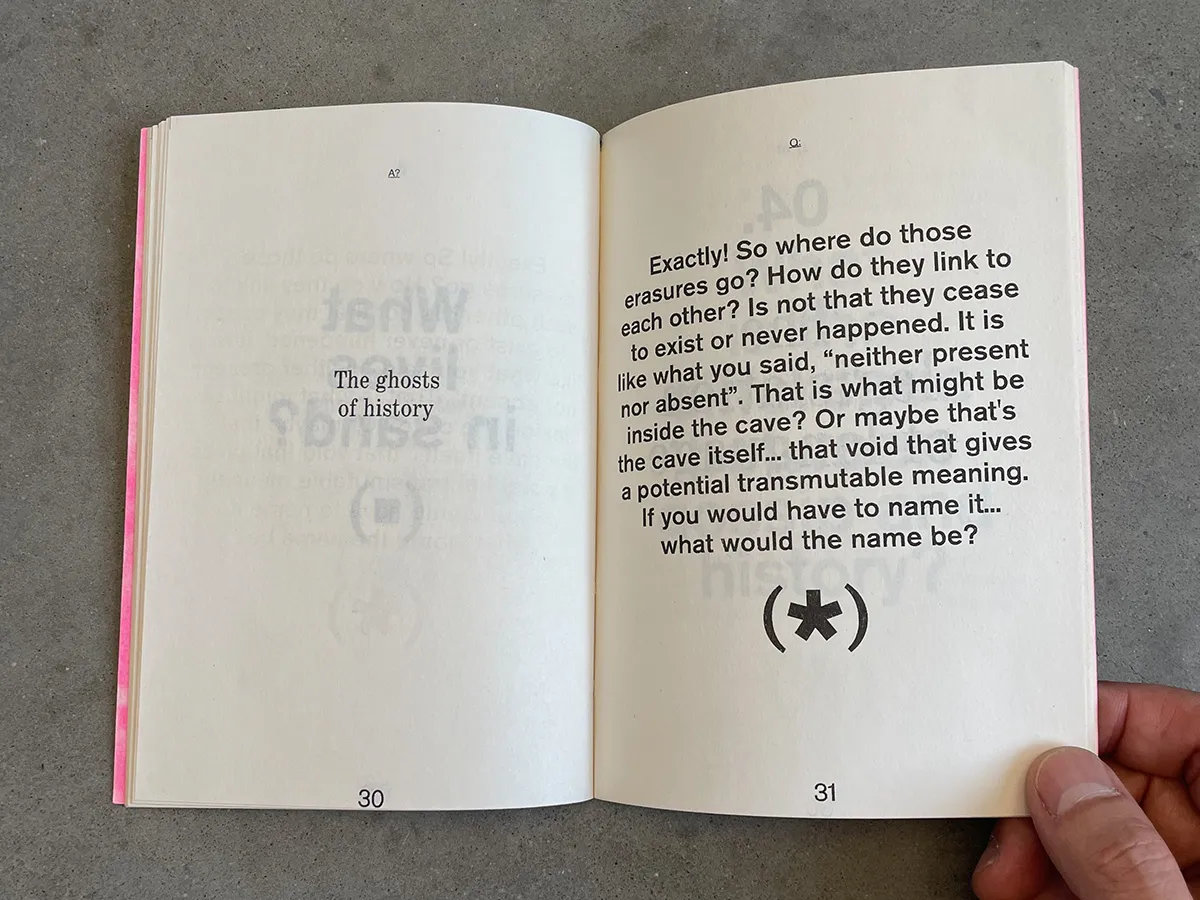
This tension between rigour and flexibility is reflected in the booklet’s formal and material design, which strikes a precise balance between DIY rawness and careful graphic craft. The design makes clearly evident its means of production. This distinctive aesthetic is shared across many Gato Negro publications, often using the same orange and pink Riso colour palette and restrained sans-serif typography, a visual language they aptly describe as “a common ground for artistic, radical, and avant-garde thought."
I got my copy of A&Q at the 2024 New York Art Book Fair where I was tabling with Justseeds. Gato Negro were our neighbours in the “political” publishers section and my co-tablers were familiar with them. I picked it up while browsing based on the striking design and once I noticed Kameelah Janan Rasheed as a contributor, an artist I have long-admired for her multitudinous and material approach to language and learning, I decided to buy it. I was so pleased, and a little surprised, to find Rasheed’s words in this humble little publication. I admit I saw her as a “BIG” artist and didn’t expect to find her so close to me. The booklet’s design broached this intimacy.
I would later meet Kameelah in Montréal when Dark Opacities Lab invited her to speak alongside Maryam Kashani as part of our Nazar speaker series. Though the conversation revolved around death, grief, and surveillance in the context of the Israel's settler-colonial genocide, she was warm, she was funny, she was deep, and I had a lot of questions for her.